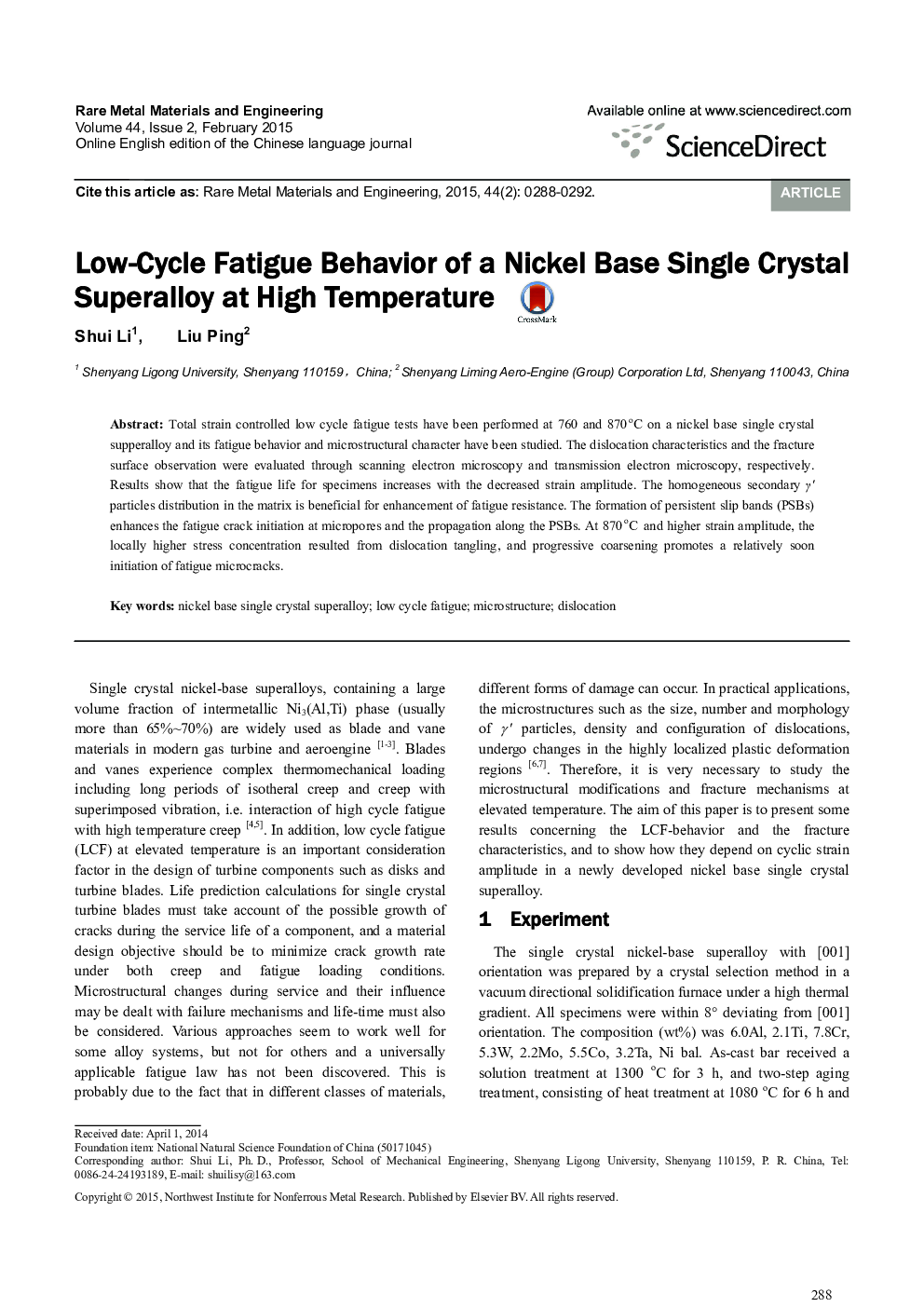| Article ID | Journal | Published Year | Pages | File Type |
|---|---|---|---|---|
| 814812 | Rare Metal Materials and Engineering | 2015 | 5 Pages |
Total strain controlled low cycle fatigue tests have been performed at 760 and 870°C on a nickel base single crystal supperalloy and its fatigue behavior and microstructural character have been studied. The dislocation characteristics and the fracture surface observation were evaluated through scanning electron microscopy and transmission electron microscopy, respectively. Results show that the fatigue life for specimens increases with the decreased strain amplitude. The homogeneous secondary γ′ particles distribution in the matrix is beneficial for enhancement of fatigue resistance. The formation of persistent slip bands (PSBs) enhances the fatigue crack initiation at micropores and the propagation along the PSBs. At 870°C and higher strain amplitude, the locally higher stress concentration resulted from dislocation tangling, and progressive coarsening promotes a relatively soon initiation of fatigue microcracks.
